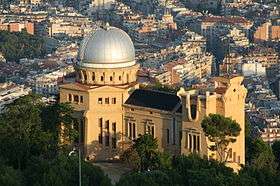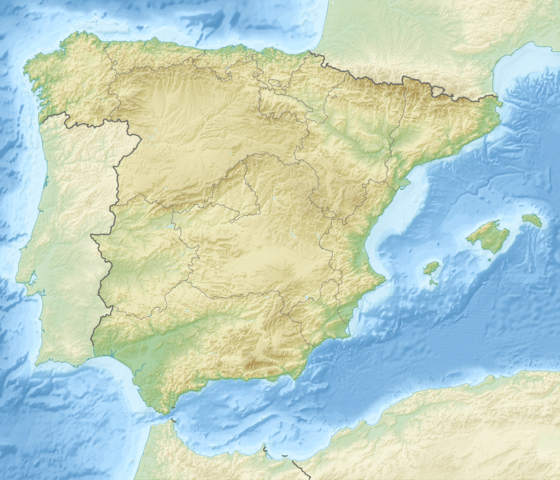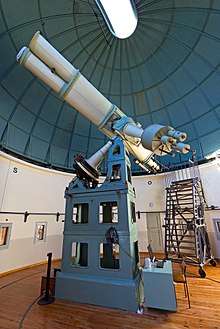Fabra Observatory
 | |||||
| Alternative names |
Observatorio Fabra | ||||
|---|---|---|---|---|---|
| Named after |
Camil Fabra i Fontanills | ||||
| Organization | Real Academia de Ciencias y Artes de Barcelona | ||||
| Observatory code | 006 | ||||
| Location | Barcelona, Spain, EU | ||||
| Coordinates | 41°25′06″N 2°07′27″E / 41.4183°N 2.1242°ECoordinates: 41°25′06″N 2°07′27″E / 41.4183°N 2.1242°E | ||||
| Established | 1904 | ||||
| Website |
fabra | ||||
| Telescopes | |||||
| |||||
 Location of Fabra Observatory | |||||
|
| |||||
The Fabra Observatory (Catalan: Observatori Fabra, IPA: [upsəɾβəˈtɔɾi ˈfaβɾə]; obs. code: 006) is an astronomical observatory located in Barcelona, Catalonia, Spain pointed towards the south at 415 metres above sea level (latitude: 41,4184° N; longitude: 2,1239° E).
It was established in 1904 and belongs to the Royal Academy of Science and Arts of Barcelona (Catalan: Reial Acadèmia de Ciències i Arts de Barcelona). Its main activity is the study of asteroids and comets. It is the fourth most ancient observatory in the world that is still functioning.
It is where the comet 32P/Comas Solà was discovered by Josep Comas Solà.
Telescope
The double refractor was built by Mailhat, Paris, in 1904. The visual instrument (the lower of the two tubes) has an aperture of 38 cm and a focal length of 6 meters (f/15.8). The photographic instrument also has an aperture of 38 cm, but a shorter focal length of 4 meters (f/10.5).[1]
 Mailhat telescope
Mailhat telescope- Mailhat refractor from 1904
 Fabra Observatory on the hill above the metropolis
Fabra Observatory on the hill above the metropolis